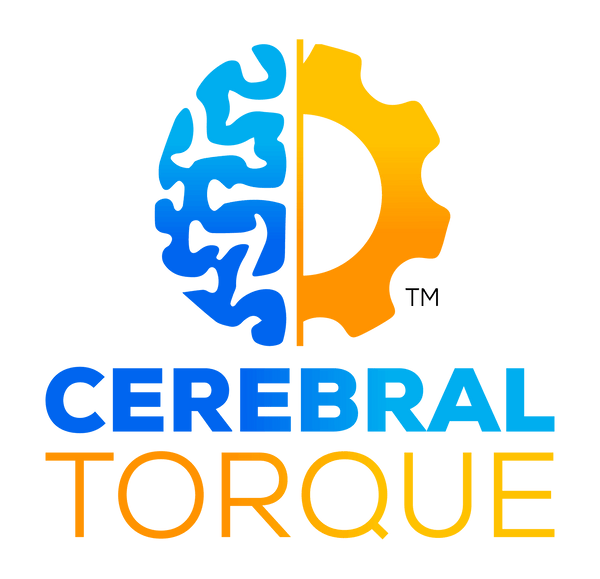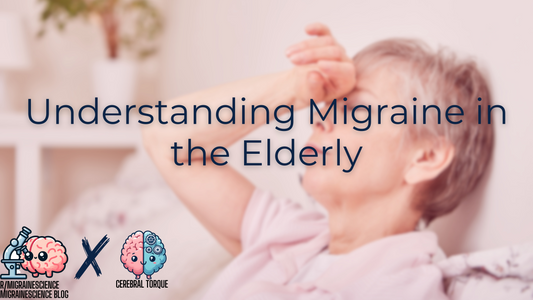
Medication Overuse Headache aka Medication Adaptation Headache aka Rebound Headache: A Comprehensive Guide
Cerebral TorqueShare
First, A Note on Terminology: Moving from MOH to MAH
The Importance of Person-First, Non-Stigmatizing Language
The term "Medication Overuse Headache" (MOH) has been traditionally used in medical literature, research, and clinical practice to describe headaches that develop or worsen with frequent use of acute headache medications (abortives). However, this terminology inadvertently places blame on patients and suggests willful overuse of medication, which misrepresents the true nature of this condition. Moving forward in this article, we will use the term "Medication Adaptation Headache" (MAH) to more accurately reflect the pathophysiology and remove unintended stigma.
Why This Change Matters
The shift from "overuse" to "adaptation" represents more than just a semantic change. It acknowledges several important clinical and patient-centered realities:
- Physiological Adaptation: The condition results from the body's natural adaptation to repeated medication exposure, similar to how other medications can lead to tolerance over time. This is a biological process rather than a behavioral choice.
- Disease Progression: The need for increasing medication often reflects the underlying progression of the primary headache disorder rather than patient misuse. Patients are typically trying to manage legitimate pain rather than overusing medication unnecessarily.
- Patient Empowerment: Removing blame-implying language helps create a more supportive therapeutic alliance between healthcare providers and patients, potentially improving treatment outcomes.
- Medical Recognition: The term "adaptation" better reflects the medical nature of the condition, acknowledging it as a complication of necessary treatment rather than a patient-created problem.
Medication Adaptation Headache (MAH): A Comprehensive Guide
What is MAH?
Medication Adaptation Headache (MAH) represents one of the most challenging conditions in headache medicine, affecting a significant portion of chronic primary headache patients. This paradoxical condition occurs when patients, in their attempt to manage headache pain, develop increasingly frequent and intense headaches due to regular, excessive use of acute headache medications. Understanding and managing MAH requires a comprehensive approach that addresses both the immediate symptoms and the underlying patterns that led to its development.
Clinical Definition and Pathophysiology
Medication Adaptation Headache manifests as headaches occurring on 15 or more days per month, developing or worsening during medication use. The condition is established when acute headache medications are used regularly for more than three months, with frequency thresholds varying by medication type (see table below). The pathophysiology involves complex neurological changes, including sensitization of pain pathways and alterations in central pain processing mechanisms. These changes create a self-perpetuating cycle where increased medication use leads to more frequent headaches, which in turn drives further medication use.
Medication Thresholds and Risk Profiles
| Medication Category | Specific Medications | Days/Month Threshold | Withdrawal Difficulty | Risk of MAH |
|---|---|---|---|---|
| Triptans | Sumatriptan, Rizatriptan, etc. | ≥10 days | Moderate | High |
| Ergotamines | DHE, Ergotamine tartrate | ≥10 days | Moderate-Severe | High |
| Simple Analgesics | Aspirin (also an NSAID), Acetaminophen | ≥15 days | Mild | Moderate |
| NSAIDs | Naproxen, Ibuprofen, etc. | ≥15 days | Mild-Moderate | Moderate |
| Combination Analgesics | At least 2 drugs or caffeine combinations | ≥10 days | Moderate-Severe | High |
| Opioids | Codeine, Tramadol, etc. | ≥10 days | Severe | Very High |
| Butalbital Compounds | Fioricet, Fiorinal | ≥3 days | Severe | Very High |
Comprehensive Treatment Approach
Initial Assessment
The foundation of successful MAH treatment begins with a thorough initial assessment. Clinicians must carefully evaluate the patient's complete headache history, including the pattern of medication use, previous treatment attempts, and the presence of any comorbid conditions. This evaluation should include a detailed review of all medications currently being used, both prescription and over-the-counter, as well as any alternative treatments. The assessment should also explore psychological factors and social support systems, as these elements significantly influence treatment outcomes.
Patient Education
Patient education serves as a crucial component of MAH treatment. Patients need to understand the mechanism by which their medication use is contributing to their headaches. This understanding helps build commitment to the treatment plan and improves compliance with medication withdrawal protocols. Education should cover the expected course of withdrawal, potential symptoms, and coping strategies.
Withdrawal Protocols
The withdrawal process can be managed through either outpatient or inpatient protocols, depending on several factors including the type and quantity of medications, the presence of comorbidities, and the patient's support system.
Outpatient Management
The majority of patients can be effectively managed on an outpatient basis. Ideal candidates for oumanagement demonstrate high levels of motivation and commitment to the treatment process. These patients typically do not have a history of frequent use of barbiturates, opioids, or other potentially addictive medications. Success in outpatient management is often correlated with strong social support networks and medical stability. Patients with minimal psychological or psychiatric comorbidities tend to achieve the best outcomes in this setting, as they can more effectively navigate the challenges of medication discontinuation without intensive medical supervision.
Inpatient Management
Inpatient treatment becomes necessary for certain patient populations who require more intensive care and monitoring. Patients with significant drug dependency often benefit from the controlled environment of an inpatient setting, particularly when complex medical conditions require constant monitoring. Those at high risk for withdrawal complications need the safety net of immediate medical intervention that inpatient care provides. Patients with limited social support systems may find the structured environment of inpatient care beneficial, as it provides consistent monitoring and support. Additionally, those with severe psychological or psychiatric comorbidities often require the comprehensive care approach available in an inpatient setting.
Primary Discontinuation Strategies
| Strategy | Description | Best For | Considerations |
|---|---|---|---|
| Switch to Alternative Therapy* | Stop overused medication while starting/optimizing preventive therapy; use alternative symptomatic medication ≤2 days/week | Patients at risk for toxicity but not withdrawal | Supported by low-quality evidence and open-label trials |
| Continue with Modification* | Add preventive therapy while initially continuing overused medication | Patients unable/unwilling to stop immediately; no immediate toxicity concerns | Results in fewer moderate to severe headache days |
| Bridge Therapy** | Add temporary medication to reduce withdrawal symptoms | Patients with severe/frequent headaches unlikely to succeed with simple discontinuation | Limited supportive data available |
| Complete Discontinuation (NOT recommended) | Stop overused medication for two months without preventive medication | Highly motivated patients with good pain tolerance | May result in failure and temporary worsening of headaches |
*The MOTS trial examined these two treatment approaches for chronic migraine patients with medication adaptation headache. The study involved 720 adult patients across 34 US clinics, predominantly women (87%) with an average age of 44. Both groups received preventive migraine medicine, but one group stopped their overused medication and switched to a different relief medicine limited to two days per week, while the other group continued using their overused medicine as needed. After 12 weeks, both approaches proved equally effective in reducing migraine days to approximately 9 days per month. Quality of life, disability levels, and adverse events were also similar between groups.
**Bridge Therapy Options
| Medication | Protocol | Duration | Setting |
|---|---|---|---|
| Naproxen | 550 mg twice daily | 2-4 weeks | Outpatient |
| Prednisone (other oral glucocorticoids possible) | 60 mg daily | 5 days | Outpatient |
| IV DHE + Metoclopramide | Q8h dosing (usually) | Depends on headache recurrence | Inpatient |
| IV Prochlorperazine | 5-10 mg Q8h | Depends, but usually around 6 days | Inpatient |
| IV Valproate (if DHE failed or contraindicated) | 15 mg/kg load, then 5 mg/kg q8h | 12-48h | Inpatient |
| IV Methylprednisolone | 100-200 mg q12h | 2-3 days | Inpatient |
Preventive Treatment Strategy (Only examples. See Unraveling Migraine Book for full list)
| Medication Class | Examples | Target Headache Type | Typical Timeline**** |
|---|---|---|---|
| Beta Blockers | Propranolol, Metoprolol | Migraine | 4-6 weeks |
| Anticonvulsants | Topiramate, Valproate | Migraine, Mixed | 4-8 weeks |
| Antidepressants | Amitriptyline, Venlafaxine | Migraine, Tension-type, Mixed | 6-8 weeks |
| CGRP Antagonists | Erenumab, Fremanezumab | Migraine | 12 weeks |
| OnabotulinumtoxinA | Botox | Chronic Migraine | 24 weeks |
****The timeline varies greatly and should be individualized for each patient.
Long-term Follow-up and Monitoring Schedule
| Time Point | Assessment Focus | Interventions |
|---|---|---|
| Week 1-2 | Withdrawal symptoms | Symptom management, prevention therapy initiated or adjusted |
| Week 3-4 | Medication compliance | Follow preventive therapy |
| Month 2-3 | Headache patterns | Follow preventive therapy and optimize as needed |
| Month 4-6 | Long-term strategy | Relapse prevention |
| Annual | Comprehensive review | Treatment optimization |
Relapse Prevention
Following successful withdrawal, ongoing monitoring and support are necessary prevent relapse. Follow-up appointments should address medication adherence and any emerging challenges. Patients should maintain headache diaries/journals to track patterns, allowing for early intervention if problematic patterns begin to emerge.
To prevent the redevelopment of MAH, the frequency of acute symptomatic medication usage should be limited, and the rationale for the restriction should be explained to the patient. The use of triptans, ergotamine-dihydroergotamine, or combination analgesics should be limited to nine or fewer days a month on average, butalbital-containing analgesics should be used sparingly and dosing limited to three or fewer days a month, and NSAIDs to 14 or fewer days a month to prevent MAH. The more restrictive limits on butalbital-containing analgesics are due to their high potential for MAH.
For patients requiring frequent acute treatment, switching to gepants (CGRP receptor antagonists) may be an appropriate alternative, as current evidence suggests these medications do not cause medication adaptation headache. This makes them a potentially safer option for patients who need regular acute treatment while trying to prevent MAH recurrence.
Prognosis and Treatment Outcomes
Research indicates that approximately 72% of patients show significant improvement within the first six months of treatment. However, relapse remains a significant concern, with rates of:
- 31% at six months
- 41% at one year
- 45% at four years
Success rates depend partly on the type of primary headache and the type of medication involved. Most relapses happen in the first year after withdrawal. Outcome at one year after MAH treatment may be a reliable predictor of long-term remission and could be an important time to detect those at risk of MAH relapse.
Special Considerations
High-Risk Populations
Certain patient populations require additional attention and possibly modified treatment approaches. These include:
- Psychiatric comorbidities
- Multiple failed withdrawal attempts
- Multiple medication types
- Long-term opioid use
- Complex medical comorbidities
Successful management of MAH requires a comprehensive, individualized approach combining careful medication withdrawal, preventive therapy, and ongoing monitoring. With proper treatment and adherence to medication guidelines, most patients can achieve significant improvement in their headache patterns and quality of life. However, continued vigilance and patient education remain essential, as early recognition of warning signs can prevent relapse and support long-term success in managing this challenging condition.


